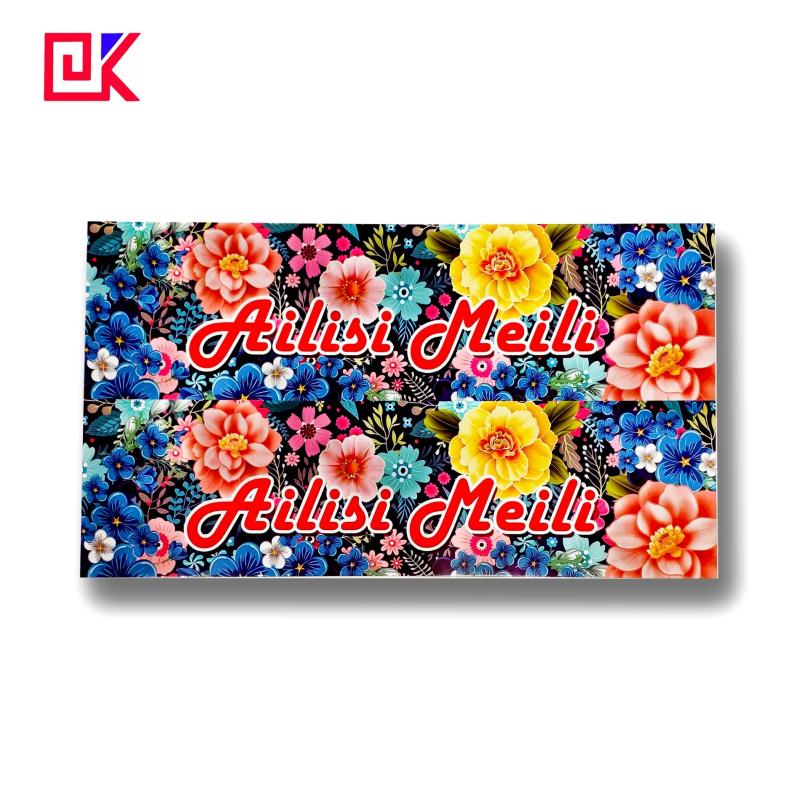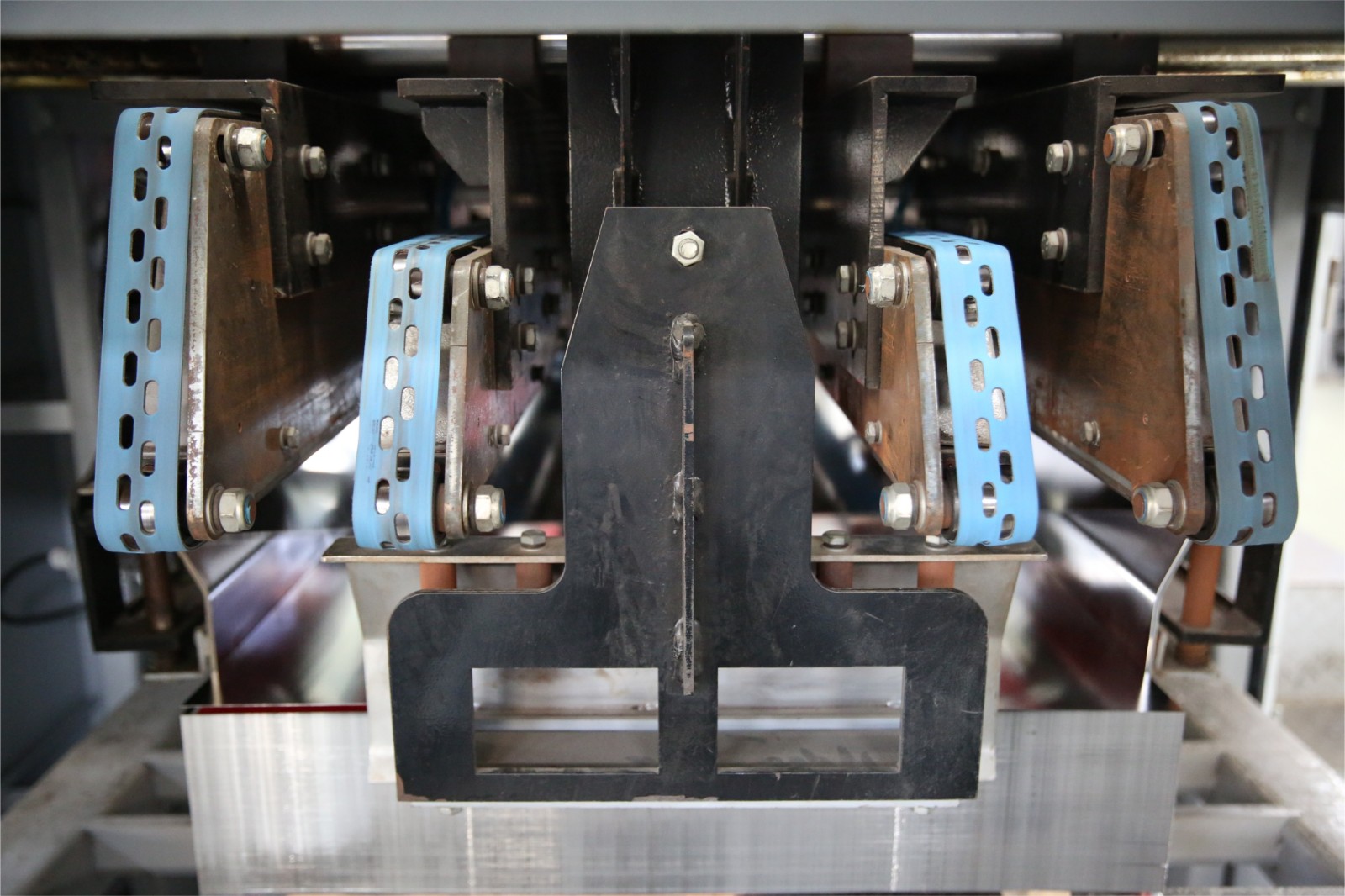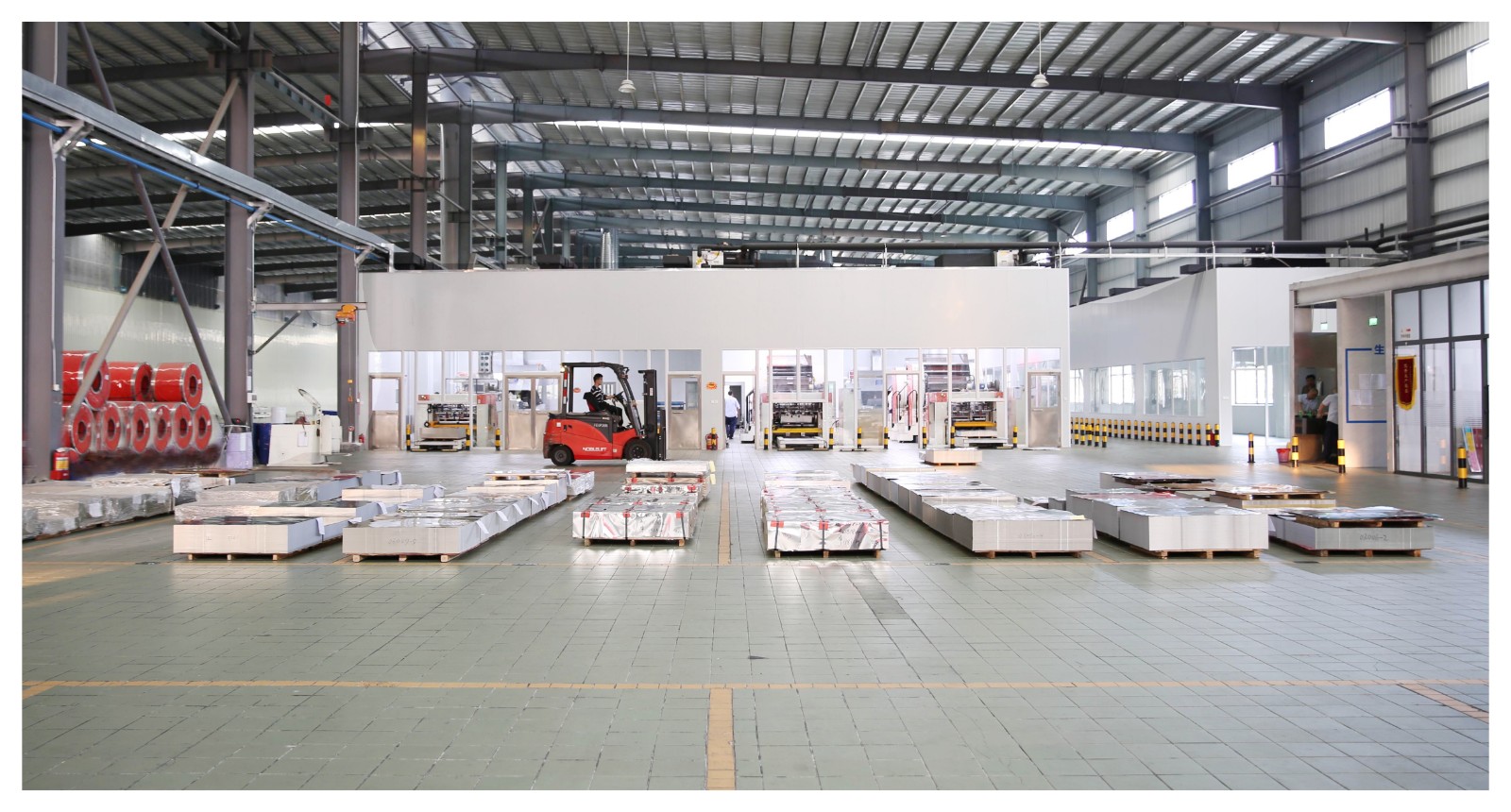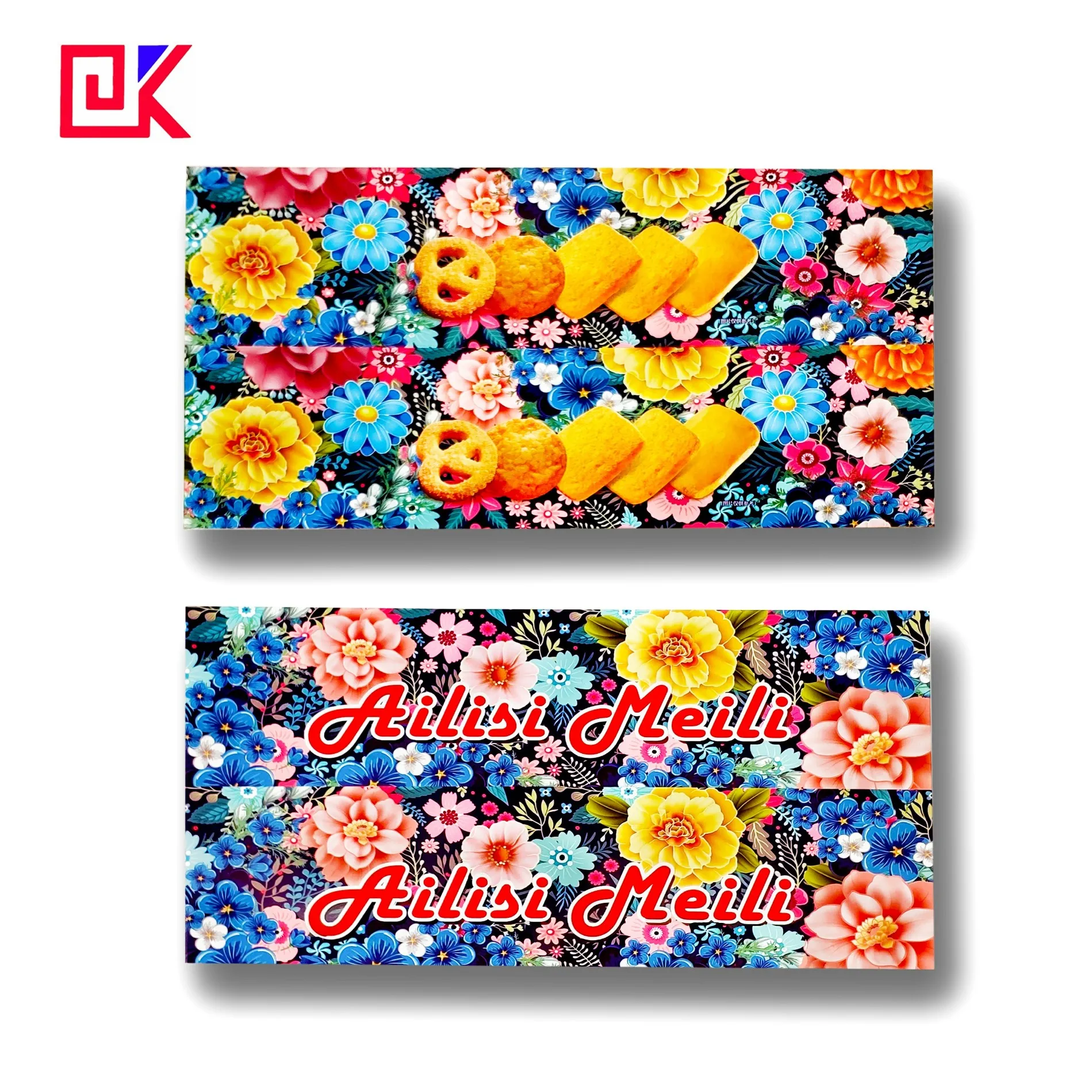In our daily life, cookie packaging tin is a very common form of food packaging, which not only protects the food inside, but also attracts the attention of consumers with its beautiful design. Whether it is given as a gift during holidays or in daily consumption, cookie packaging tin plays an important role. However, many people may not know that most of these cookie packaging tins are made of a material called "tinplate sheet". So, why should cookie packaging tin be made of tinplate sheet?
What is special about tinplate sheet that makes it the preferred material for food packaging? This article will explore these issues in detail and reveal the manufacturing secrets behind cookie packaging tin.

What is tinplate sheet?
To understand why cookie packaging tin is mostly made of tinplate sheet, we first need to figure out what tinplate sheet is. Tinplate sheet is a material that coats a thin layer of tin on the surface of a steel plate. Its manufacturing process mainly includes the production of cold-rolled steel sheets and surface tinning.
Steel plate substrate
The core material of tinplate sheet is steel plate, which is usually made of low-carbon steel. This steel is characterized by moderate strength and good toughness. After the steel plate is processed by cold rolling, it has a smooth and hard surface and has high mechanical strength. In food packaging, the strength of the steel plate provides reliable support for the packaging, making it less likely to deform or damage during storage and transportation.
Surface tinning
Tin plating on the surface of the steel plate is the key process that distinguishes tinplate sheet from other metal materials. Tin has good anti-corrosion properties and can effectively prevent the steel plate from rusting in a humid environment. Therefore, the tin-plated tinplate sheet can remain stable for a long time without damaging the food. The thickness of the tin layer varies according to the use requirements, and is generally sufficient to provide long-term protection for the food.
Features of tinplate sheet
As a food packaging material, tinplate sheet has many significant characteristics:
● Strong anti-corrosion: The presence of the tin layer effectively blocks the direct contact between air and moisture and steel, preventing the steel from rusting.
● Non-toxic and safe: Tin is a safe and non-toxic metal that meets food safety standards and will not pollute food.
● High mechanical strength: The hardness and toughness of the steel itself make tinplate sheet have sufficient strength to effectively protect food from external impact.
● Strong plasticity: The plasticity of tinplate sheet enables it to be made into packaging cans of different shapes and sizes to meet the needs of various food packaging.
These characteristics make tinplate sheet one of the most commonly used materials in the food packaging industry, especially when making metal packaging containers such as cookie packaging tin and candy cans, tinplate sheet has irreplaceable advantages.

Why does cookie packaging tin use tinplate sheet?
Biscuits are a kind of snack food loved by consumers, and their shelf life is relatively long, so the requirements for packaging are also relatively high. In order to ensure the taste and freshness of biscuits and prevent moisture and deterioration, cookie packaging tin must have excellent sealing, barrier and durability. Tinplate sheet is the ideal material to meet these needs. The following is a detailed analysis of the reasons why tinplate sheet is used as a packaging material for cookie packaging tin from several aspects.
Good barrier properties
The most feared thing for biscuits is moisture, which will quickly make biscuits lose their crisp taste and cause food deterioration. As a metal material, tinplate sheet has natural barrier properties and can effectively block the intrusion of external factors such as water vapor, air, and light. Compared with plastic or paper packaging, tinplate packaging cans can maintain the original quality of biscuits for a longer time.
The presence of the tin layer not only prevents the steel from rusting, but also enhances the protective effect of the tinplate sheet. Through a strict sealing design, the tinplate sheet can isolate the external air and moisture, and protect the internal food from oxidation and moisture.
Mechanical strength and protection
Biscuits are fragile foods, especially some thin or crispy biscuits, which are easy to break during transportation and handling. Therefore, the packaging material (cookie packaging tin) must have sufficient mechanical strength to remain stable under external pressure and not easily deformed.
The steel matrix of the tinplate sheet provides strong support for the packaging. It is hard enough to withstand external pressure, collision and extrusion, ensuring that the biscuits are intact throughout the supply chain. At the same time, the tinplate sheet will not break as easily as glass, nor deform as easily as plastic, which makes it excellent in protecting biscuits.

Safe and non-toxic, in line with food hygiene standards
Cookie packaging tin must meet strict hygiene and safety standards. As a packaging material that comes into direct contact with food, tinplate sheet has significant advantages in this regard. Tin is a non-toxic metal, which is safe to use in cookie packaging tin and will not contaminate food.
Tinplate sheet undergoes multiple processes, including tin plating and coating of steel, which ensure that the surface of tinplate sheet does not contain harmful substances and can come into direct contact with food. In addition, in actual production, the inner wall of tinplate sheet is usually coated with a food-grade coating to prevent direct contact between food and metal, thereby avoiding possible chemical reactions and ensuring the safety and original taste of food.
Good sealing and extended shelf life
The shelf life of biscuits is directly related to the sealing of the packaging. If the packaging is not tight enough, air and moisture will enter the packaging, causing the biscuits to soften, deteriorate, or even mold. Tinplate sheet has excellent sealing performance due to its sturdy material and precise manufacturing process.
By using a specially designed can lid, tinplate sheet can form an almost completely sealed state. This not only extends the shelf life of the biscuits, but also maintains a good closure after opening the can, preventing the biscuits from continuing to get damp when they are not finished. In addition, the can lid design of many tinplate sheets allows multiple openings and closings, which allows consumers to use them repeatedly without affecting the quality of the food, which is very convenient and practical.
Environmental protection and recyclability
Modern consumers are paying more and more attention to environmental protection, and the recyclability of packaging materials has become one of the important factors for many brands to choose. Compared with plastic materials, tinplate sheets have higher environmental value. Tinplate sheets are a metal material with a very high recycling rate. Through simple reprocessing, tinplate sheets can be reused without causing too much burden on the environment.
Moreover, due to the beautiful appearance and excellent texture of tinplate sheets, many consumers will reuse cookie packaging tins after using biscuits, as storage jars, decorations, etc., which further extends the service life of the packaging and reduces resource waste.

Comparison between tinplate sheets and other packaging materials: Who is the best?
Although tinplate sheets have many advantages in biscuit packaging, there are also packaging forms of other materials on the market, such as plastic, paper or composite materials. So, what is the difference between tinplate sheet and these materials? Why can tinplate sheet stand out and become the first choice for cookie packaging tin packaging?
Tinplate sheet vs. plastic
Plastic packaging is widely used in food packaging because of its light weight and low cost. However, compared with tinplate sheet, plastic has poor barrier properties, especially in terms of moisture and oxidation resistance, plastic materials often cannot provide long-term protection. In addition, plastic is less environmentally friendly and difficult to recycle and degrade, especially today when global environmental problems are becoming increasingly severe, plastic packaging faces more challenges.
In contrast, tinplate sheet has better barrier and recycling properties, which can not only effectively extend the shelf life of food, but also meet environmental protection requirements. Although the cost of tinplate sheet packaging is relatively high, its durability, protection and environmental protection characteristics make it popular in high-end food packaging.
Tinplate sheet vs. paper packaging
Paper packaging is often used in simple food packaging because of its light weight, environmental protection and low cost. However, the biggest disadvantage of paper packaging is that it has poor moisture resistance and is not suitable for long-term storage of moisture-prone foods such as biscuits. Even if composite materials are used on paper packaging to enhance its barrier properties, the durability and protection of paper packaging are still not as good as tinplate sheets.
In comparison, tinplate sheets not only have excellent moisture-proof properties, but also provide better protection for food. Especially in cookie packaging tins that have high environmental requirements, such as biscuits, the advantages of tinplate sheets are more obvious.

